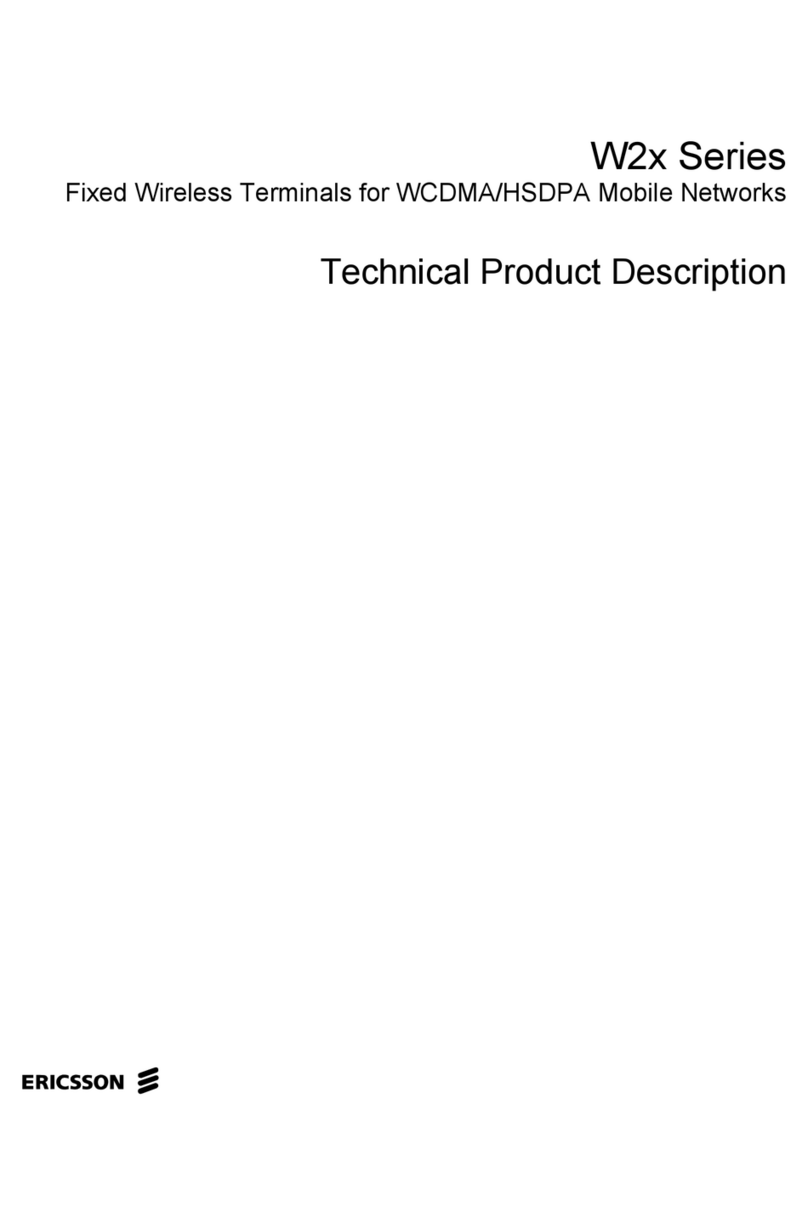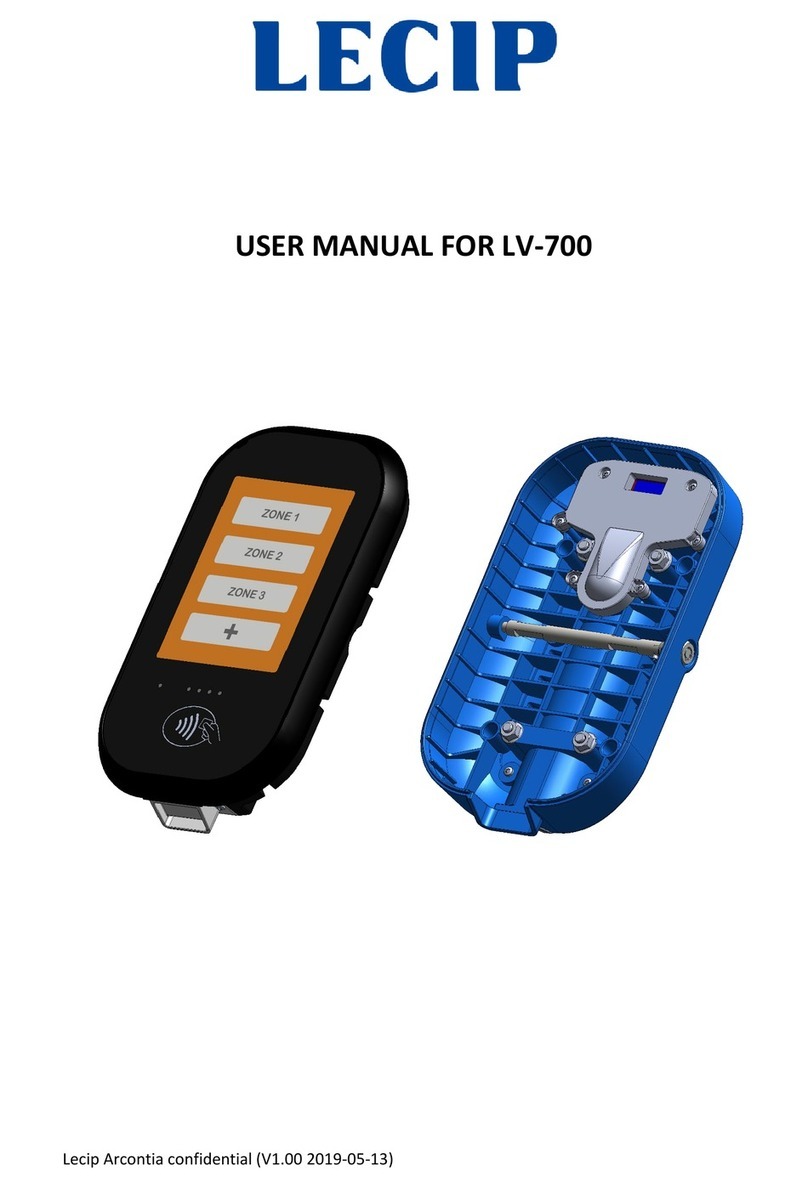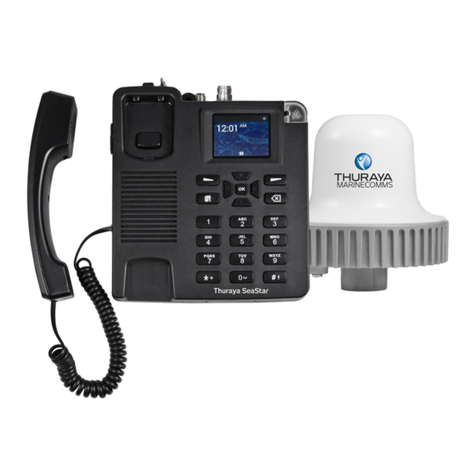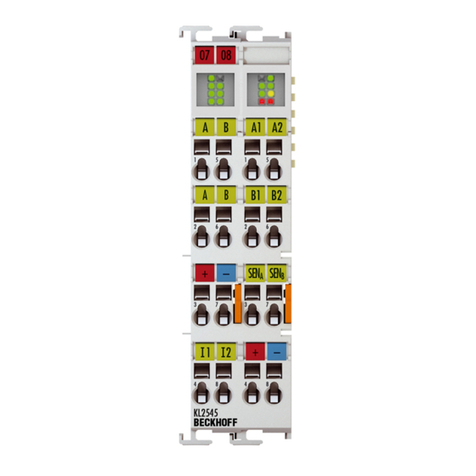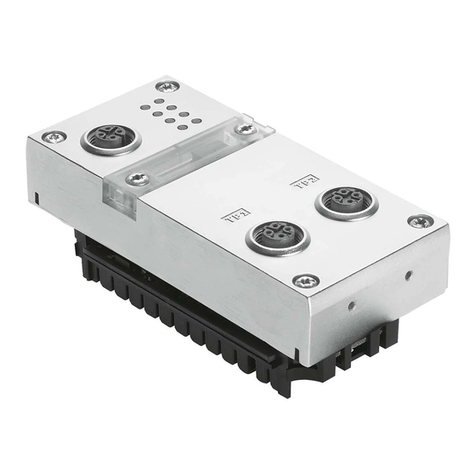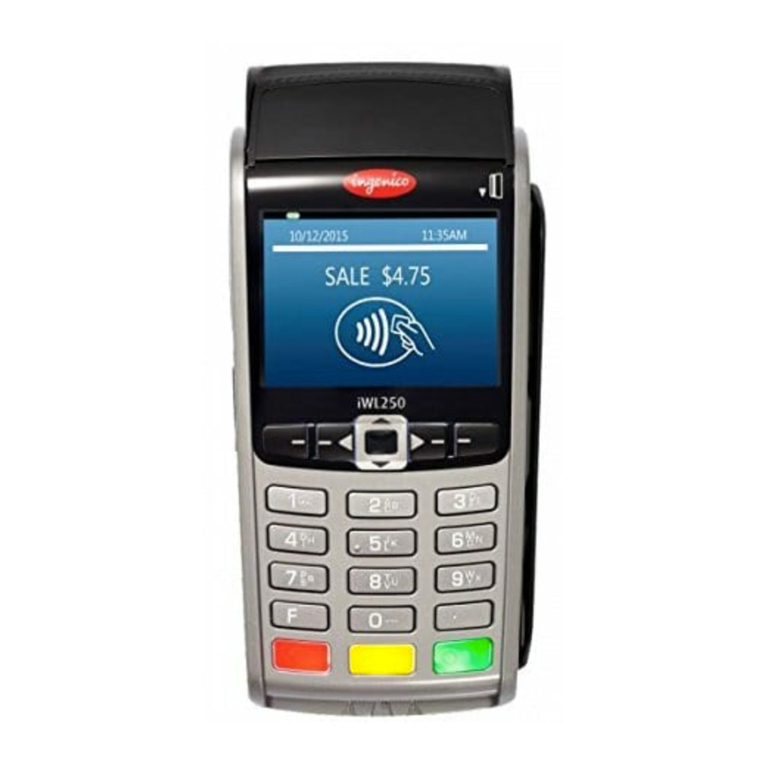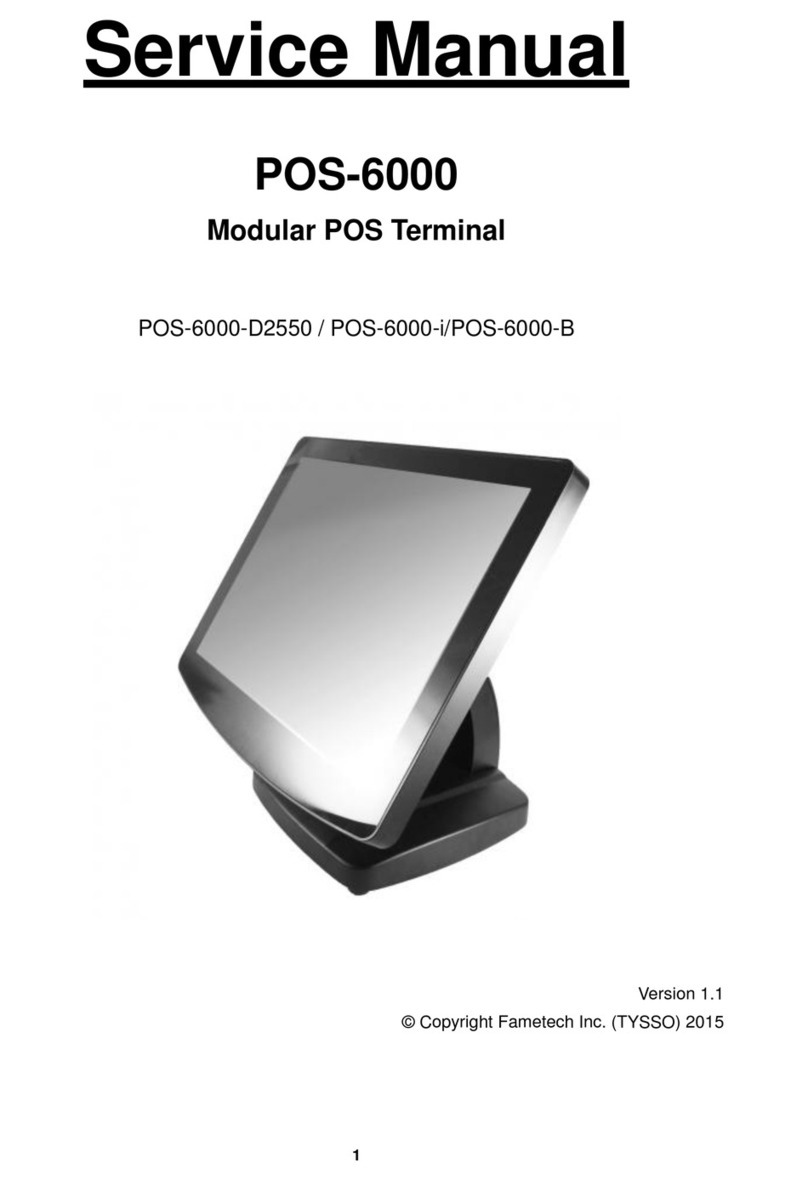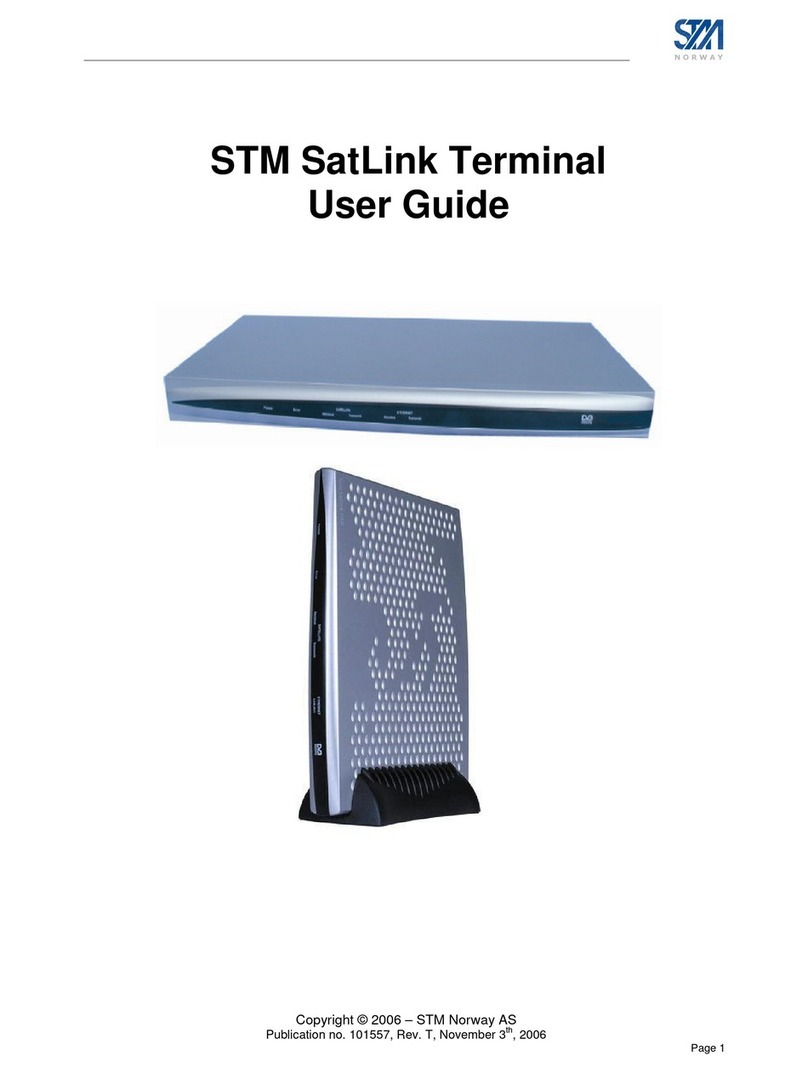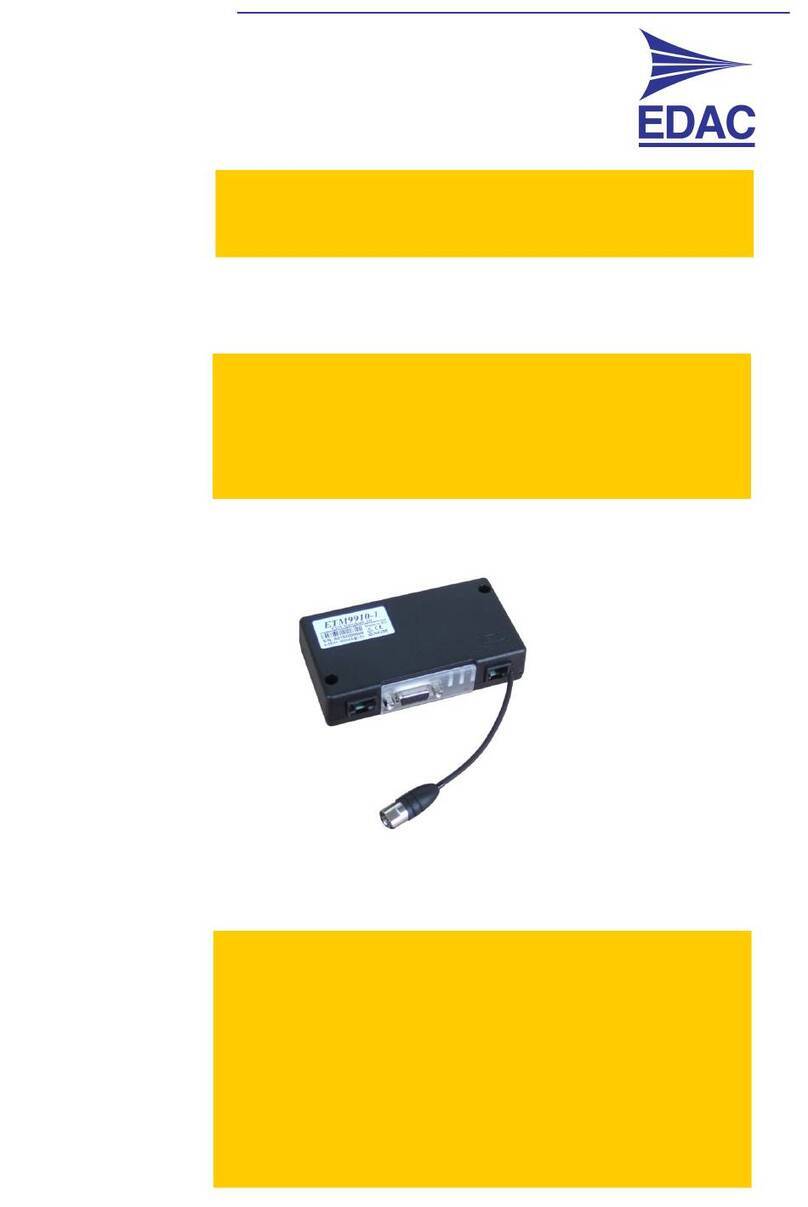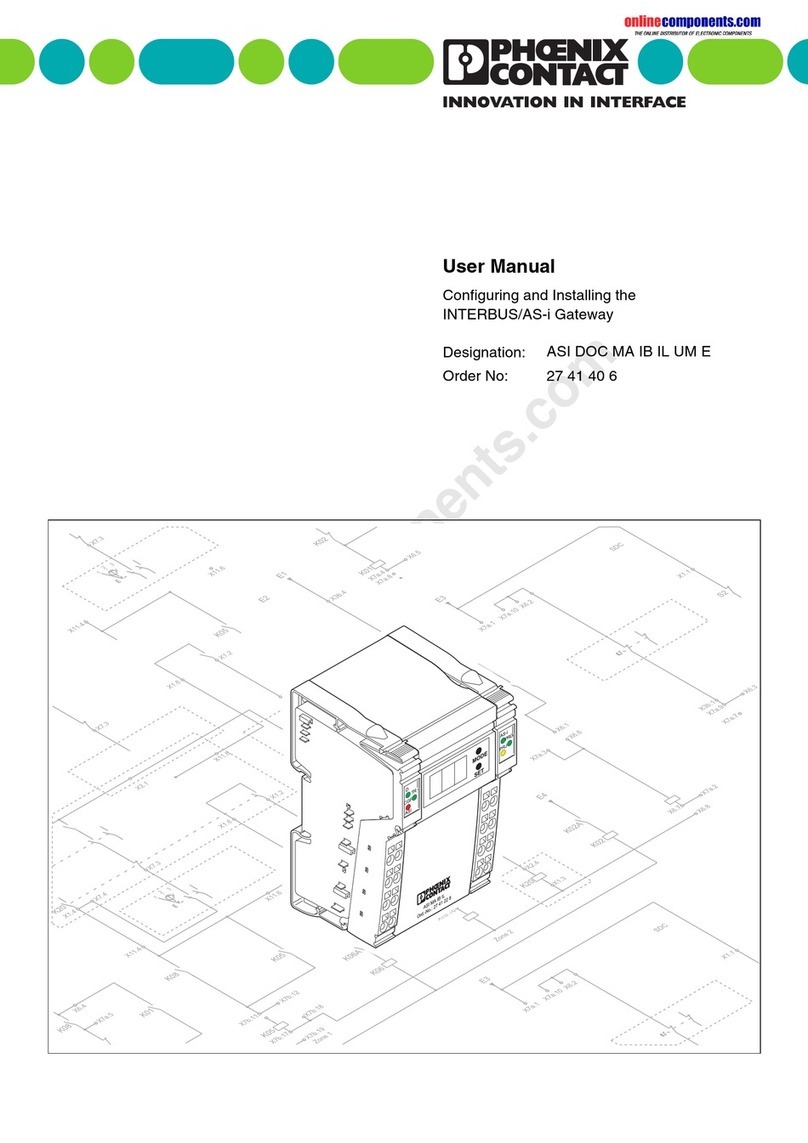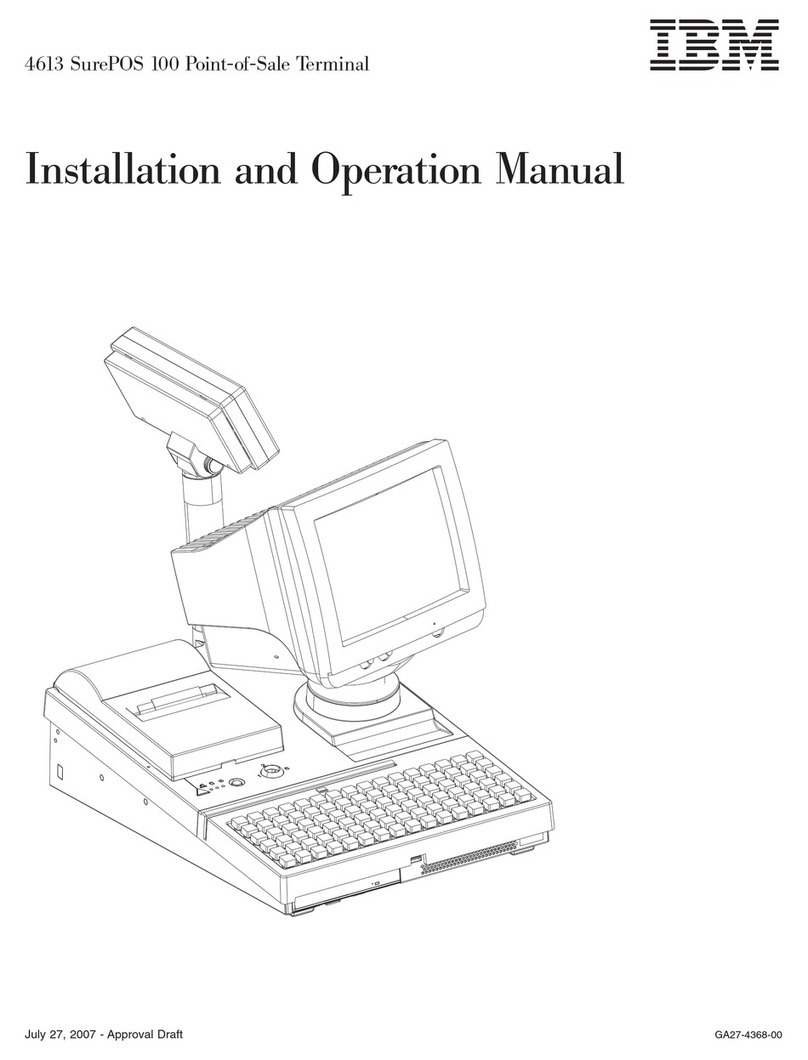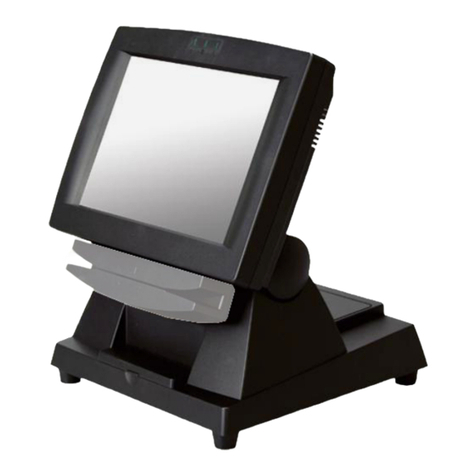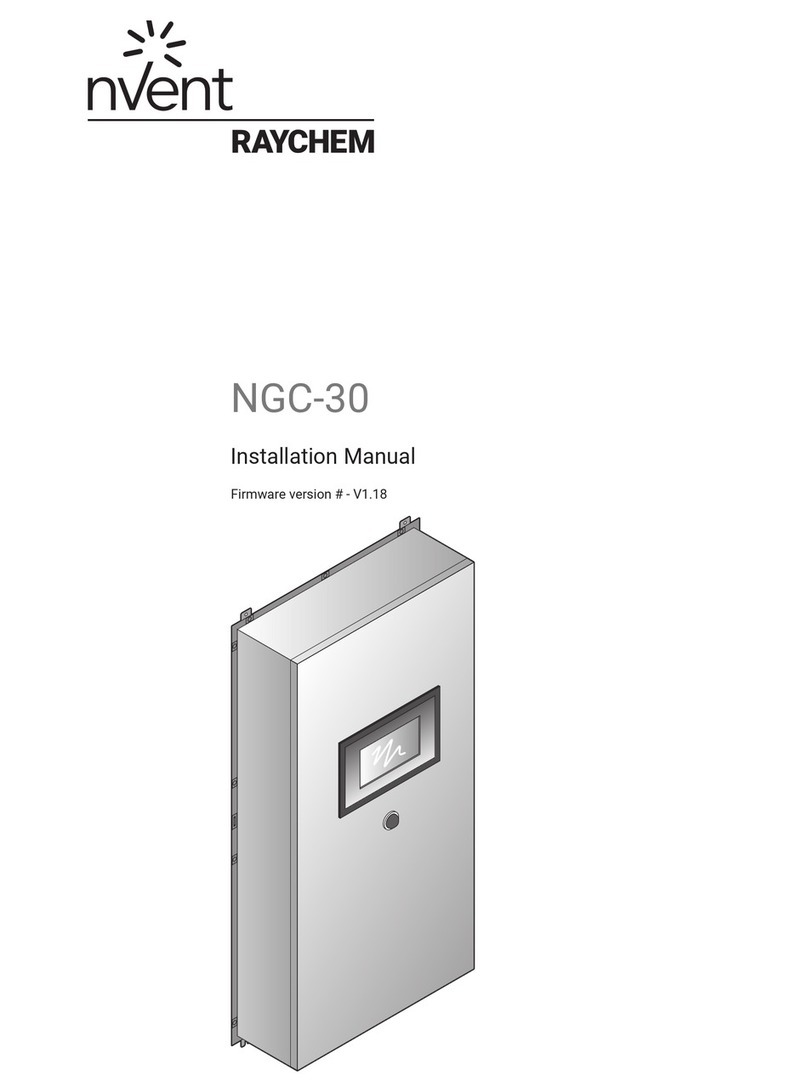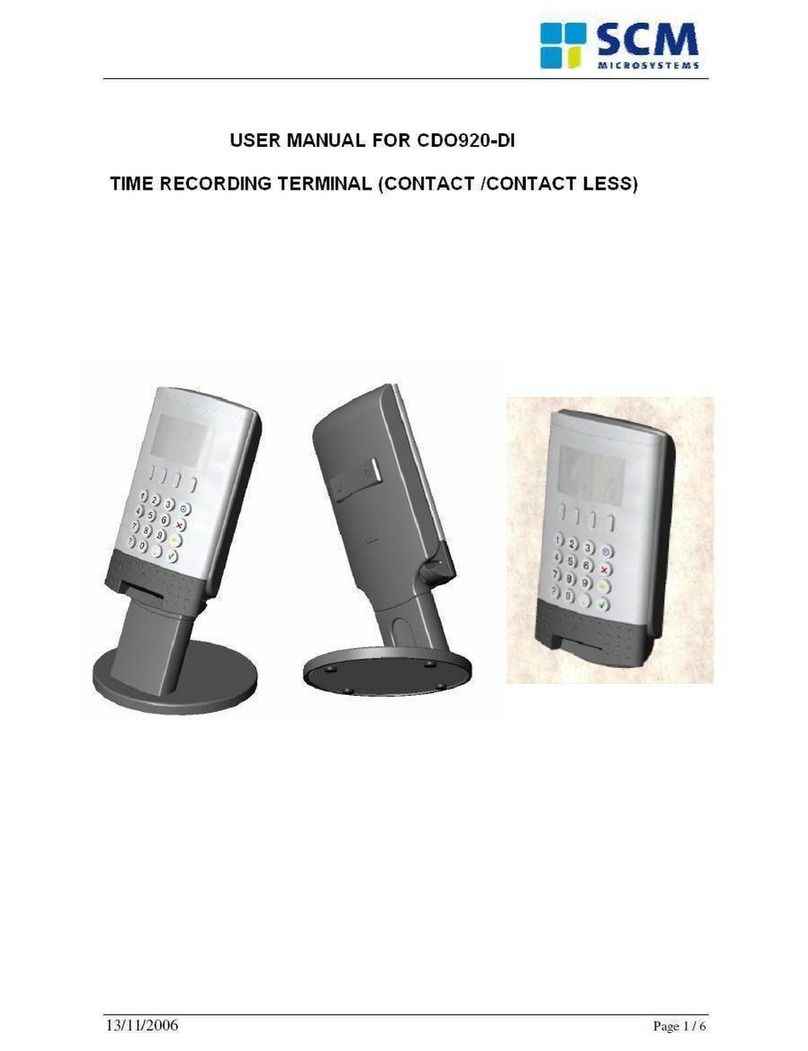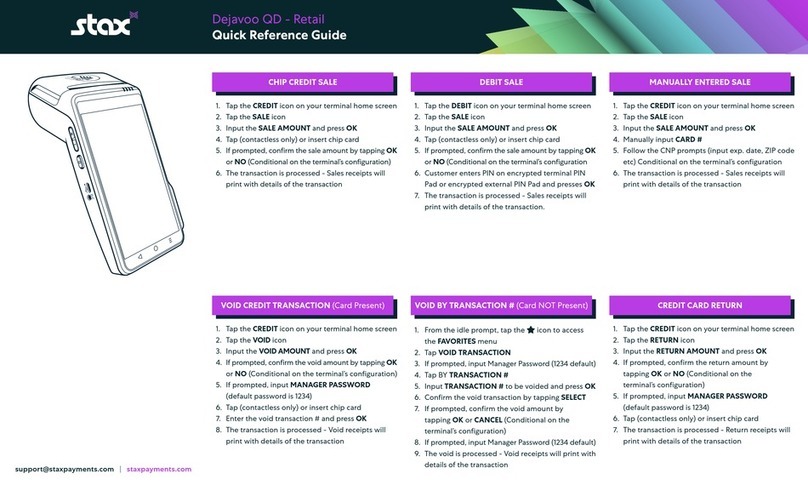Ericsson G32 User manual

Ericsson G32 / G36
Fixed Wireless Terminal for GSM/EDGE Mobile Networks
ser Guide

EN/LZT 151 235 R1
D
© Ericsson AB 2006 — All Rights Reserved

Table of Contents
Fixed Wireless Terminal: G32 and G36 models 3
Table of Contents
Table of Contents.......................................... 3
Welcome....................................................... 4
Fixed Wireless Terminal................................. 4
Installation..................................................... 4
Connecting Devices to the FWT .................... 4
Advanced Features ....................................... 4
PC Data Configurations................................. 4
Web-based Configuration.............................. 4
Troubleshooting ............................................ 4
Technical Data .............................................. 4
Accessories .................................................. 4
Product Care and Safety............................... 4
Warranty ....................................................... 4
Glossary........................................................ 4
Index............................................................. 4

Welcome
4 Fixed Wireless Terminal: G32 and G36 models
Welcome
Welcome to the ser Guide for the G32 / G36 Fixed Wireless Terminal.
Important information: Some of the services described in this
guide might not be supported by all networks. Please, contact your
network operator for information on different network services
operational in your GSM network.
The latest version of this user guide can be downloaded from:
http://www.ericsson.com/enterprise/library/manual.shtml
Disposal of the product
Your product should not be placed in municipal waste. Please check local
regulations for disposal of electronic products.

Welcome
Fixed Wireless Terminal: G32 and G36 models 5
Copyright
No part of this document may be reproduced without the written
permission of the copyright owner.
The contents of this document are subject to revision without notice due
to continued progress in methodology, design and manufacturing.
Ericsson shall have no liability for any error or damage of any kind resulting
from the use of this document.
Warranty
ERICSSON MAKES NO WARRANTY OF ANY KIND WITH REGARD TO
THIS MATERIAL, INCL DING, B T NOT LIMITED TO, THE IMPLIED
WARRANTIES OF MERCHANTABILITY AND FITNESS FOR A
PARTIC LAR P RPOSE. Ericsson shall not be liable for errors contained
herein nor for incidental or consequential damages in connection with the
furnishing, performance or use of this material.
Declaration of Conformity
Hereby, Ericsson Enterprise AB declares that this product is in conformity
with the requirements and other relevant provisions of the European
R&TTE directive 1999/5/EC.
Details to be found at: http://ericsson.com/sdoc.
FCC Statement
Before a wireless terminal is available for sale to the public, it must be
tested and certified to the FCC that it does not exceed the limit
established by the government adopted requirement for safe exposure.
This device complies with CFR17 Part 15 and Part 24 of the FCC rules.
Operation is subject to the following two conditions:
(1) This device may not cause harmful interference, and (2) this device
must accept any interference received, including interference that may
cause undesired operation.

Fixed Wireless Terminal
6 Fixed Wireless Terminal: G32 and G36 models
Fixed Wireless Terminal
Product Description
The FWT is a flexible and cost-effective solution for connection to the
wireless GSM network when there is no fixed line infrastructure or if you
need additional telephone lines.
The G36 can also be connected to a PBX so you can benefit from the
Least Cost Routing (LCR) capabilities offered by most PBX vendors to
optimize your costs by routing outgoing calls to mobile phones through
the GSM network.
The FWT allows automatic network searching between GSM 850/1900 or
GSM 900/1800 frequencies, ensuring world wide coverage in the GSM
networks.
The FWT features the latest technology, which makes it perfect for
everyday communication:
•Available in 2 dual dual-band GSM models (GSM 850/1900 or
GSM 900/1800).
•Telephone line providing high quality speech, G3 fax and up to
V.90 data transmission.
•EDGE (Enhanced Data Rates for GSM Evolution) is a 3G
technology that delivers broadband-like speeds to GSM
devices.
•GPRS (General Packet Radio Service), which keeps you always
connected and facilitates rapid transmission of data (ideal for e-
mail and Internet browsing).
•Embedded modem available over the SB port.
•Battery back-up (optional).
•PBX connectivity (only on the G36 model).

Fixed Wireless Terminal
Fixed Wireless Terminal: G32 and G36 models 7
Supplied Parts
After unpacking, please check that the following parts and list of
components are included:
List of Components
1. FWT unit
2. Antenna
3. 4 x mounting screws
4. Power cable ( SA, K, E or A S)
5. AC/DC adapter
6. Wall mount bracket
7. Telephone cable
8. Quick Guide and ser Guide manuals
9. CD with SB driver

Fixed Wireless Terminal
8 Fixed Wireless Terminal: G32 and G36 models
External Connector and Indicators

Installation
Fixed Wireless Terminal: G32 and G36 models 9
Installation
SIM Card
Your network operator provides you with a SIM (Subscriber Identity
Module) card. The SIM card contains information about your telephone
number and the services included in your subscription.
Preparing Your FWT
You need to follow these steps before you install the FWT on the wall and
finalize all connections.
Warning: The F T should be switched off before inserting or
removing your SIM card or connecting any devices to the F T.
Assembly
1. Connect the antenna.

Installation
10 Fixed Wireless Terminal: G32 and G36 models
2. Remove the front cover, by pressing down and pushing the small tab
that is in the center of the bottom part of the FWT. Open the SIM
Card holder and insert the SIM Card.
3. Close the SIM Card holder, placing it horizontally and securing it with
the sliding part of the holder.
4. Install the battery (optional) in the battery compartment (over the SIM
Card). To do so, connect the battery cable to the FWT connector.
Connect the black cable to the negative pole (-) of the battery and the
red cable to the positive pole (+). Fit the cable under the holding tab
(over the SIM Card) and insert the battery until the tab fixates it.
5. Replace the front cover.
Connecting a telephone to the FWT
Connect an analog telephone to the line interface (RJ11) of the FWT.
Important: You may have to use this telephone to enter the PIN
code.

Installation
Fixed Wireless Terminal: G32 and G36 models 11
S itch on the FWT
Connect the power supply. The FWT switches on automatically and the
LED indicators start flashing.
Note: If the Power LED is off, there is a problem with the power
supply. Please refer to the topic Troubleshooting documented on
page 4for more detailed information.
Enter PIN
Most SIM cards are protected with a PIN (Personal Identity Number),
which you get from your network operator and which you need in order to
access the network. If the SIM card is not protected by a PIN code, then
you do not need to enter a PIN.
The FWT starts the network search automatically. If the SIM card is
protected by the PIN code, then the LEDs will flash simultaneously.
There are two ways of entering the PIN code:
•With the telephone
•sing the PC
Via telephone
Please follow these steps before you enter your PIN:
1. Pick up the telephone and dial the PIN code. Press the # key on your
telephone or wait until you hear a beep tone.
2. If you make a mistake while entering your PIN, hang up the telephone
and try again.
If the PIN is correct, you will hear a beep over the telephone (positive
indication tone). If it is incorrect, a deep tone will sound (error indication
tone).
Via web interface
Please follow these steps before you enter your PIN:
1. Connect your PC to the FWT.
•Via the SB Cable: insert the mini- SB plug into the
corresponding connector on the FWT. Then insert the standard
SB plug into any available SB port on your PC.
•Via an analog Modem: connect the analog modem to your PC
as per modem supplier instructions. Then connect the
telephone cable to your modem line output and RJ11
connector on the FWT.
2. Check that your computer has the standard modem installed, if not
add one by following the steps described in PC Data Configurations
on page 4.

Installation
12 Fixed Wireless Terminal: G32 and G36 models
3. Open your Web Browser on your PC, and type in the following RL:
http://192.168.1.1/pin.asp
4. The following screen will be displayed.
5. Type in your PIN and then click on the Submit button.
If the PIN is entered incorrectly three times, the SIM card will be blocked.
If this happens, you can unblock it by using the P K (Personal nblocking
Key), which you also may get from your network operator. Please refer to
the topic SI Card Security documented on page 4 for more detailed
information.
Note: Once you have entered the PIN code for the first time, you
will not have to enter it again unless you change your SIM card.
The F T performs this operation automatically in case of power
failure.
Network Search
After you have switched on your FWT and entered the PIN, the FWT
automatically searches for a network.
When a network is found, the Radio LED is on or flashes depending on
the GSM signal strength.
Note: If the Radio LED is off, you do not have access to the GSM
network at your present location.
Now you have prepared the FWT for wall installation. Please, follow the
instructions on the next page for complete wall installation.

Installation
Fixed Wireless Terminal: G32 and G36 models 13
Installing the FWT on the Wall
FWT Location
The GSM signal strength available at the FWT location affects the
performance of the unit. The stronger the GSM signal, the better the FWT
performance.
Tip: Test several potential locations by moving the F T while
looking at the Radio LED. Select the location where the Radio LED
is continuous, or the location with the highest amount of flashes.
Note: Moving the F T as little as 20 cm can affect the GSM
reception quality.
Location Testing
Number of Radio LED flashes Location status
0 OFF nacceptable
1 - - - Acceptable
2 - - - - - - Good
3 - - - - - - - - - Very Good
Continuously ………………… Excellent
Please consider the following recommendations:
•Always select an indoor
indoorindoor
indoor location, preferably close to a window
and as high as possible in the building. Generally, you will
experience better GSM signal strength in these places.
•Do not install the FWT in a wet or damp location.
•Do not install the FWT in an outdoor location.
•Do not install the FWT on walls or in rooms that contain large
amounts of metal, steel or wiring.
•Do not expose the FWT to extreme temperatures (near
radiators, cooling vents, etc).
If you experience poor reception quality, an outdoor antenna may improve
reception. Please refer to the topic Accessories documented on page 4
for more detailed information.
Warning: hen choosing the final location for the F T, ensure
that there is at least 20cm between the F T antenna and all
persons.

Installation
14 Fixed Wireless Terminal: G32 and G36 models
Wall mo nting
Please proceed as indicated in the following picture.
1. Fix the wall-mounting bracket on the wall.
2. Press the FWT against the wall-mounting bracket.
3. Slide the FWT downwards

Installation
Fixed Wireless Terminal: G32 and G36 models 15
Warning: Once you have fixed the F T to the wall and switched it
on, check the final status of the LEDs. If either one is off, then there
is a problem with the power supply or the GSM signal.
Now the FWT is ready for connecting devices and making calls.
Note: If you want to remove the F T from the wall bracket, then
you have to press the tab (step 1) as indicated in the following
picture and then slide the F T upwards (step 2).

Connecting Devices to the FWT
16 Fixed Wireless Terminal: G32 and G36 models
Connecting Devices to the FWT
Warning: Before you start any connections please refer to the
topic Product Care and Safety documented on page 4 for more
detailed information and contact your network operator if you have
any questions.
Warning: To ensure good protection against electrical discharges
and the best audio quality, proper grounding of the power supply is
strongly recommended.
Connecting devices to the FWT
Connect the devices to the FWT (RJ11 connector) in the same way as
with an analog telephone line. The devices must be connected in parallel.
You can connect the devices directly to the FWT telephone line connector
(RJ11) or make an internal telephone wiring, use RJ11 splitters or similar
connectors.

Connecting Devices to the FWT
Fixed Wireless Terminal: G32 and G36 models 17
The FWT is also equipped with a SB port that enables you to use it as a
GSM modem. This enables PC fax and for data transfers as well as SMS
services.
Note: hen making the connections, the two-wire telephone cable
polarity does not matter.
Tip: If your home or company is already wired with telephone
cable, you only need to connect the cable to the F T RJ11
connector and your telephone line will be up and running in all
rooms.
Note: The telephone wire must be installed indoors.
Note: The telephone wire should not exceed 600 meters.
Checking the connections
Once the devices (1 up to 3) have been connected, do the Ring Back Test
as described below in order to check the connections:
•Lift one telephone and dial **#10#
**#10#**#10#
**#10#. You will hear a beep tone
and the terminal LEDs will start flashing. Three flashes indicate
it is synchronized.
•Hang up the telephone and check that all the connected
telephones start to ring.
•Lift any of the telephones connected and then hang up again.
The ringing will stop and the LEDs will return to normal
operation mode.
Tip: If any of the telephones are not ringing, check your telephone
cable layout and connections to make sure that all devices are
properly connected.
Checking the quality of the calls
se any of the telephones connected to the FWT terminal to make a call.
Check the speech quality and ask the receiver to call you back to confirm
that you can also receive calls.
If you have problems, please refer to the topic Troubleshooting
documented on page 4 for more detailed information.
Installing the FWT as a telephone line
The FWT is designed to provide a telephone line (RJ11 connector) to
which up to three (3) Fixed Line devices can be connected in parallel. The
FWT provides a single telephone line, which means that only one
communication can take place at a time, in the same way as an ordinary

Connecting Devices to the FWT
18 Fixed Wireless Terminal: G32 and G36 models
fixed line. You cannot, for example, receive or originate a telephone call
while sending or receiving a fax.
Warning: In order to avoid GSM interferences (noise), place the
F T at least three (3) meters (horizontal) away from electronic
devices, including the telephone equipment connected to the F T,
or other household electronic devices such as televisions or radio
receivers. The difference in height should be at least 2 meters
(vertical). This is not necessary if you use telephone devices that
fulfill the Immunity Characteristics settled by the IEC CISPR-24
standard. In this case, a minimum security distance of 20 cm is
recommended.
Connecting the FWT to a PBX
This feature is only available for the FWT G36 model. The G36 FWT is
designed to provide a telephone line (RJ11 connector) that behaves in the
same way as an analog trunk.
Generic req irements
The PBX should meet the following generic requirements for G36 FWT
connectivity:
•The PBX must provide analog trunks.
•One position of the trunk must be assigned to each G36 FWT.
•The trunk card must support either Busy Tone Detection (BTD)
or Polarity Reversal Detection on answer and release.

Connecting Devices to the FWT
Fixed Wireless Terminal: G32 and G36 models 19
•The PBX can be programmed to utilize Least Cost Routing
(LCR), if available, to automatically choose the trunk where the
G36 FWT is connected.
•If the PBX does not offer LCR, choose the trunk where the G36
FWT is connected manually with a special dialed prefix. Check
the installation in the same way as before.
The G36 FWT is compatible with most analog PBXs on the market.
G36 FWT connectivity to the analog tr nk of the PBX
If the PBX fulfils the requirements for FWT connectivity, listed above,
follow all the installation steps as described in the topic Installing the FWT
on the Wall documented on page 4.
Note: A minimum distance of 3 meters between the G36 F T and
the PBX is recommended. The cable distance between the PBX
and the G36 F T should not exceed 600 meters, and the
connection cable should be at least 0.4mm
2
in diameter.
Warning: If you install more than one G36 F T to a PBX, their
antennas have to be separated by 20 cm in height or 2 meters in
the horizontal.
If you are using an analog PBX — disconnect the telephone you have used
to enter the PIN and test the FWT, and connect the analog trunk cable
from the PBX to the FWT telephone line interface.
Check your PBX programming guide to see how to program your PBX to
route certain calls through the FWT trunk if you are using a Least Cost
Routing (LCR) programmed PBX. Once LCR is programmed, make a call
to a mobile telephone number. See if the call is established through the
FWT and check the speech quality.

Connecting Devices to the FWT
20 Fixed Wireless Terminal: G32 and G36 models
If the PBX does not offer the LCR option, choose the FWT trunk manually
with a specific prefix. Check the installation in the same way as before. If
you encounter problems, contact your distributor or network operator.
Warning: The PBX may require specific programming: both
programming and installation should be done by specialized
service personnel.
Using telephones
Telephones connected to the FWT work in the same way as if they were
connected to a fixed line network.
Warning: You will not be able to make or receive data or fax calls
while a speech call is ongoing.
Note: You can also benefit from some GSM functionality that you
usually do not have in the fixed line network. Please refer to the
topic Advanced Features documented on page 4 for more detailed
information.
Please refer to the topic Audible Tones documented on page 4 for more
detailed information.
Using fax machines
The FWT allows the connection of Group 3 analog fax machines to the
telephone line interface, in the same way as a telephone.
Note: The fax communication service has to be registered with
your network operator. Otherwise, the network will not allow faxes
to be sent or received.
Note: You will not be able to make or receive other calls while a fax
communication is established.
Sending a fax
The FWT is programmed to automatically detect outgoing calls made by
an analog fax, meaning that the user simply has to use the fax in the same
way as a conventional telephone line.
Warning: If your fax is an old model and is not able to send the fax
identification, CNG tone, you should include *01* before the
destination number (B-number) in order to inform the F T that the
next call is a fax call (Example: *01*B-number). This is not usually
necessary, as most faxes automatically send the CNG tone so that
the fax call is made automatically by the F T.
Other manuals for G32
1
This manual suits for next models
1
Table of contents
Other Ericsson Touch Terminal manuals
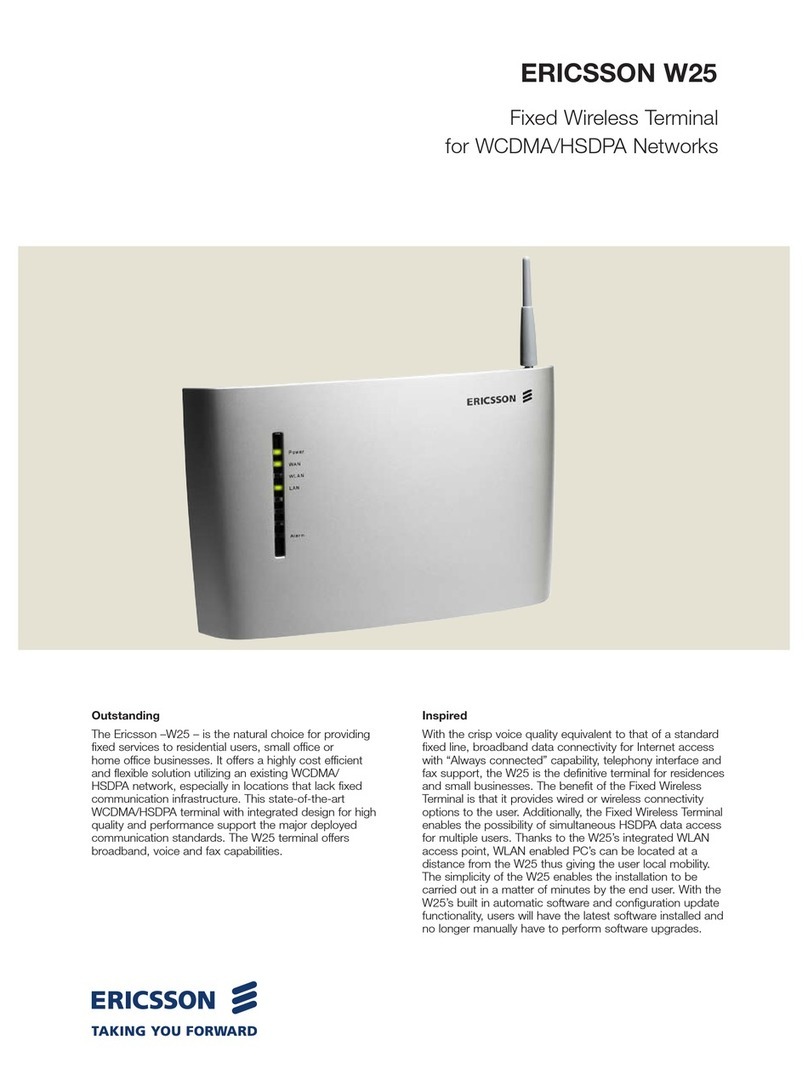
Ericsson
Ericsson W25 User manual
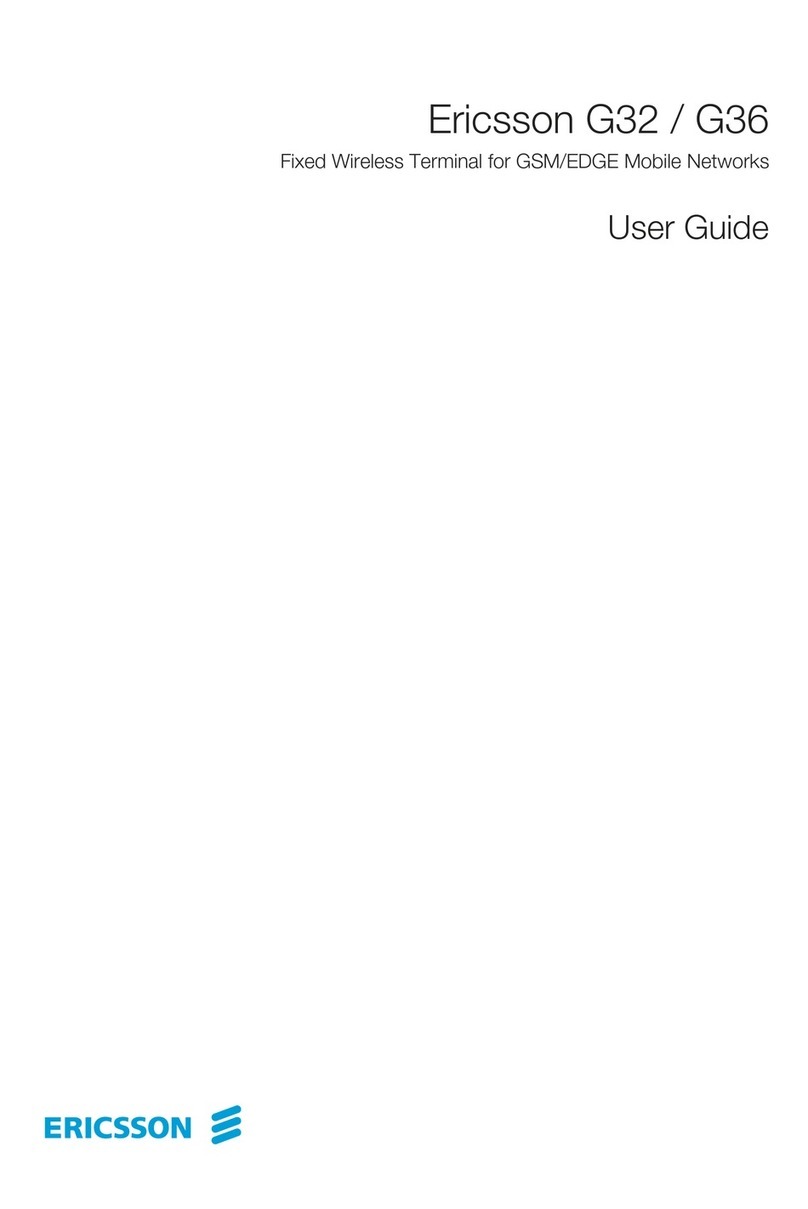
Ericsson
Ericsson G32 User manual
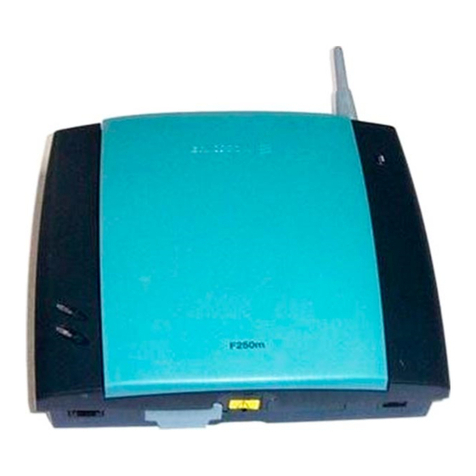
Ericsson
Ericsson F250m User manual
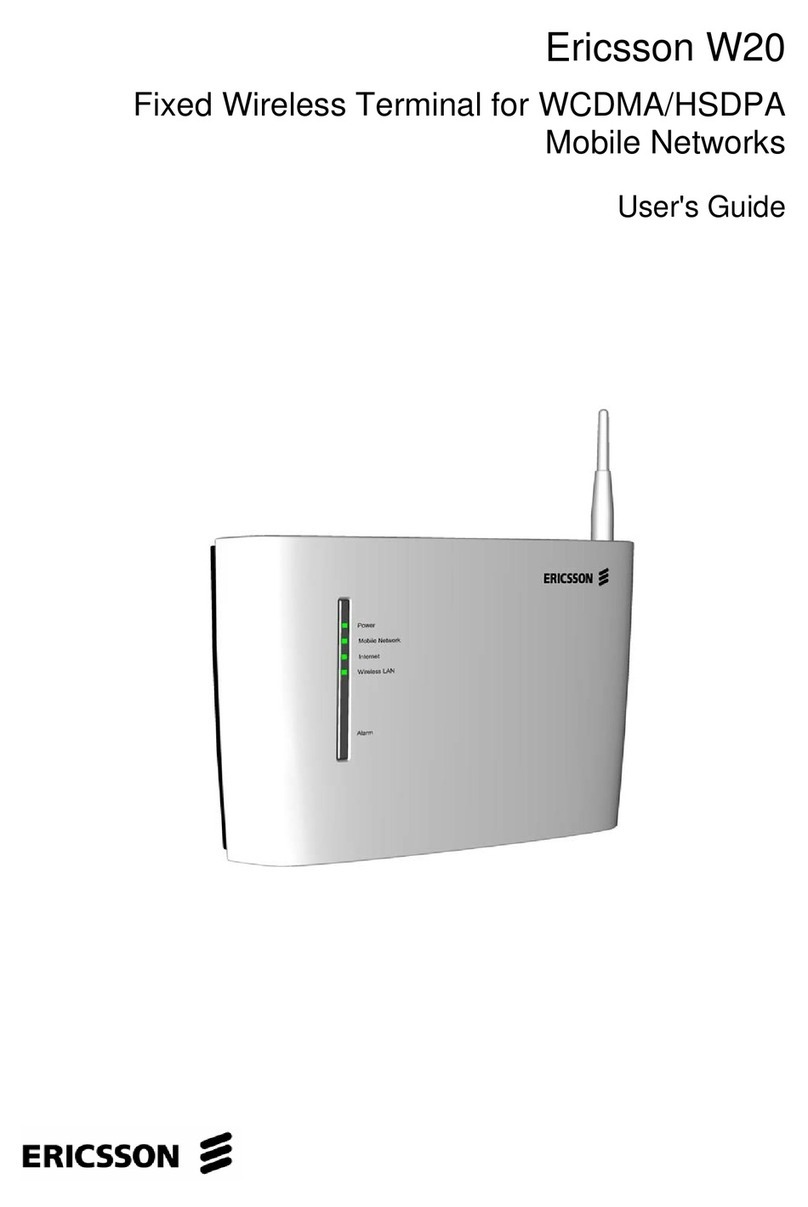
Ericsson
Ericsson WCDMA/HSDPA User manual

Ericsson
Ericsson W25 User manual

Ericsson
Ericsson W25 User manual

Ericsson
Ericsson W25 User manual
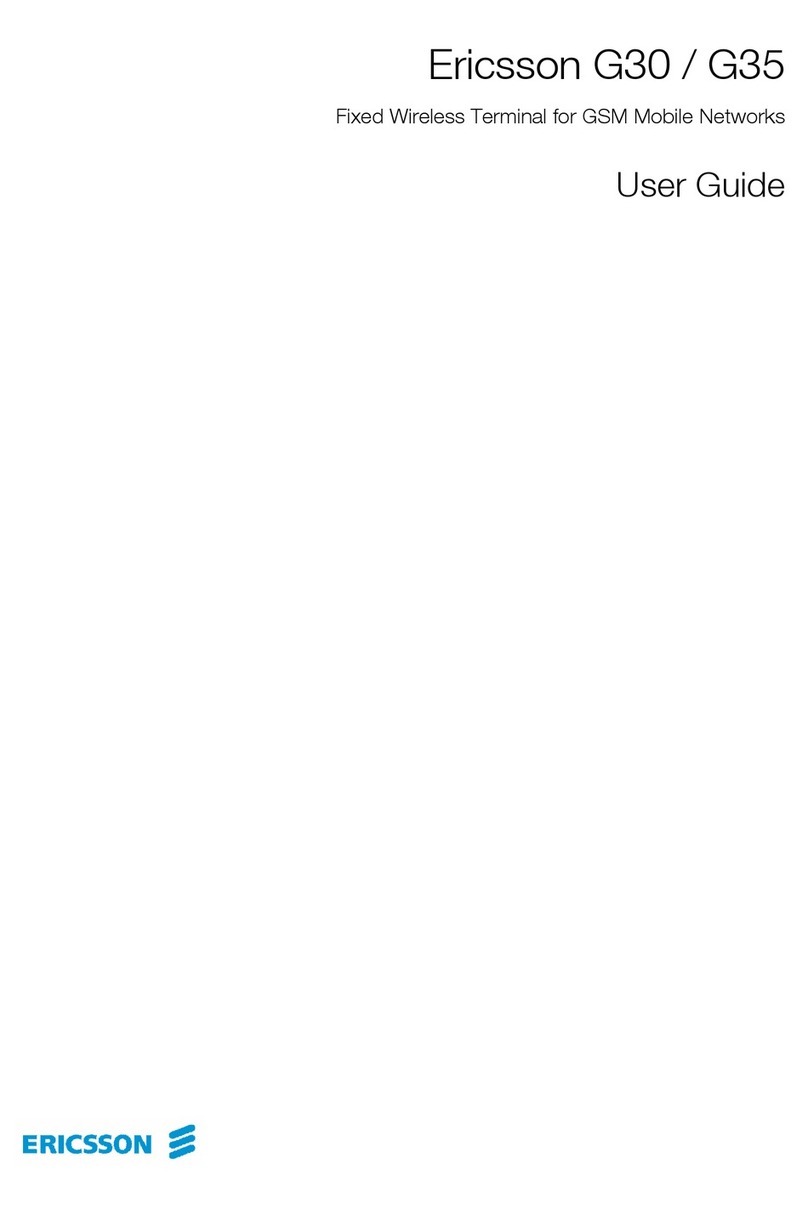
Ericsson
Ericsson G30 User manual

Ericsson
Ericsson W25 User manual

Ericsson
Ericsson G30 User manual
